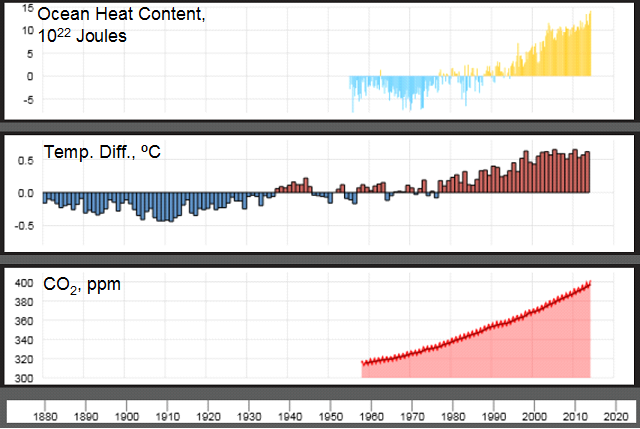The European
Union confirms the next milestone along its energy Roadmap. The nations of the world are working
toward establishing a new climate treaty by late 2015 that would lower future
greenhouse gas emissions (among other provisions). Independently, the European
Union (EU) agreed to a significant goal in reducing
emissions of greenhouse gases (GHGs) on October 23, 2014 . The
EU is a supranational organization of 28 member nations. As detailed below, it has had policies in
place for almost a decade to reduce GHG emissions. The new pronouncement extends its timelines
and codifies goals it had already established earlier. Specifically, the EU agreed to lower GHG
emissions by 40% below the emission levels of 1990 by 2030. The goals also include achieving a 27% share
of energy from renewable sources, and increasing energy efficiency by 27%.
Emission Trading
Scheme. The EU began
implementing policies to reduce GHG emissions as the Kyoto Protocol (KP) became
effective. Even before KP entered into
force the EU created its Emission Trading Scheme (ETS) in 2005
in preparation for entering under its emissions restrictions. The ETS is a cap-and-trade regime covering over
11,000 major fixed sources of GHG emissions, both governmental and
corporate. Unfortunately, for much of the
time since then the ETS has failed effectively to set a market price for GHG
emissions that would succeed to lower emissions. Initially, too many allowances for emission
were issued, so that their price tumbled.
As this was corrected, the Great Recession reduced economic activity,
lowering demand for energy, again pressuring the price for allowances to
fall. As recently as 2013 the European
Parliament temporarily suspended marketing new allowances.
The deliberations leading to the new declaration also had contentious issues
. Reducing emissions of carbon dioxide
(CO2), the most prevalent GHG, affects coal-burning generating
plants most severely because use of coal emits almost twice as much CO2
as does burning a fuel such as natural gas.
Countries in the EU heavily reliant on coal for electricity, such as Poland United Kingdom Germany Fukushima
The new declaration
keeps the EU within its overall timeline for long-term, major reductions in GHG
emissions according to its energy Roadmap (see below). But several environmental scientists and commentators consider the
plan to be inadequate to achieve the stringent Roadmap objective in 2050. They are concerned that the plan would leave
too much of the intended reduction in emissions to be achieved later, in the
two decades between 2030 and 2050, an achievement that may challenge the best
technologies and policies available. For
example, Richard Black, the director of the British Energy and Climate
Intelligence Unit, a nonprofit organization, doubted that this plan would “allow the E.U. to meet its long-term target of virtually
eliminating carbon emissions.”
Background
The countries of
the world currently face highly disparate energy situations and climate
environments. Their different conditions
color their outlook as the world faces the problem of global warming brought on
by humanity’s use of fossil fuels for energy.
In developed nations, which have benefited from the industrial
revolution since its early days, citizens are comfortable with the lifestyle
that abundant energy affords them. Many
are reluctant to change their ways to reduce emissions.
Developing nations,
on the other hand, have been applying energy-intensive technologies to expand
their economies only in recent decades, desiring to catch up to the developed
countries in relatively unconstrained fashion.
Their people too are reluctant to move away from fossil fuels to fulfill
their growing energy needs.
Impoverished
countries and island nations experience the harms brought on by global warming
for which they have not been responsible.
Their citizens hunger for the benefits that wider energy use could
provide; those in island nations face encroaching seas as land-based ice sheets
continue melting.
The United
Nations Framework Convention on Climate Change (UNFCCC) has scheduled periodic global
climate reports by the Intergovernmental Panel on Climate Change since
1990. The UNFCCC led to negotiation of
the Kyoto Protocol (KP) in 1997. KP
required developed countries to reduce greenhouse gas emissions, but excluded
developing and impoverished countries from coverage. KP entered into force in 2005 after the
requisite number of countries ratified it (the U. S.

Source:
“A Roadmap for moving to a competitive low carbon economy in 2050”, broken down by economic sector. European
Commission, March 8, 2011 ;
Interim milestones were
established for reductions in emission rates of 7% by 2005, 20% by 2020, and
40-44% by 2030. The European Environment Agency determined in 2013
that the EU is on track to achieve the 2020 milestone. Renewable fuel use had climbed to 14% of
total energy consumption. About
two-thirds of this originates from burning biomass and waste; in Sweden Austria Denmark Portugal Cyprus Spain
The EU is the
most proactive region among
developed countries in establishing policies to lower emission rates of
GHGs. The U. S.
Emissions from
the developed countries of the world
considered as a group have been relatively unchanged in recent years, and are
projected to continue that trend (see the graphic below).
Annual rates of energy usage for
Source: U. S. Energy Information Administration; http://www.eia.gov/pressroom/presentations/sieminski_07252013.pdf (slide 5).
Conclusion
The declared
intention of the European Union to continue meeting its milestones under the
energy Roadmap to 2050 is a major contribution to mitigating worldwide GHG
emissions. Similarly the executive
actions taken by the U. S. China India Copenhagen Cancun (2010) conferences of the UNFCCC. The nations of the world must succeed in
these negotiations.
© 2014 Henry Auer







